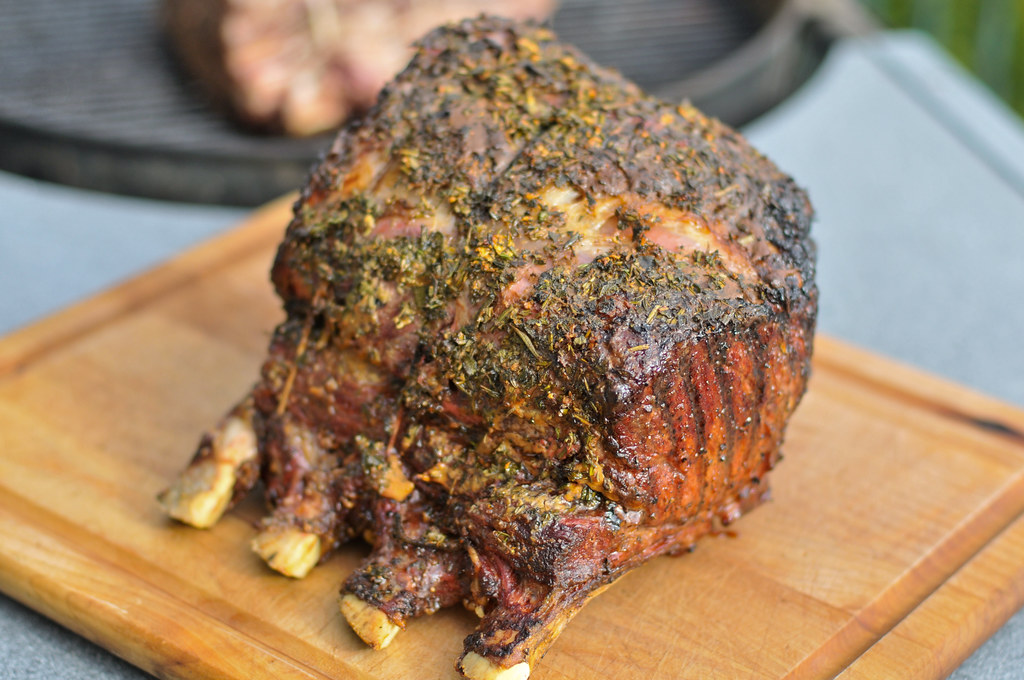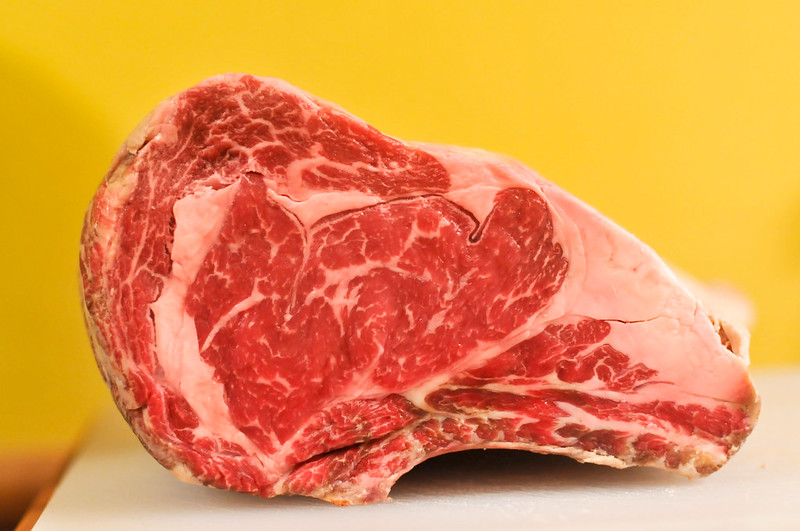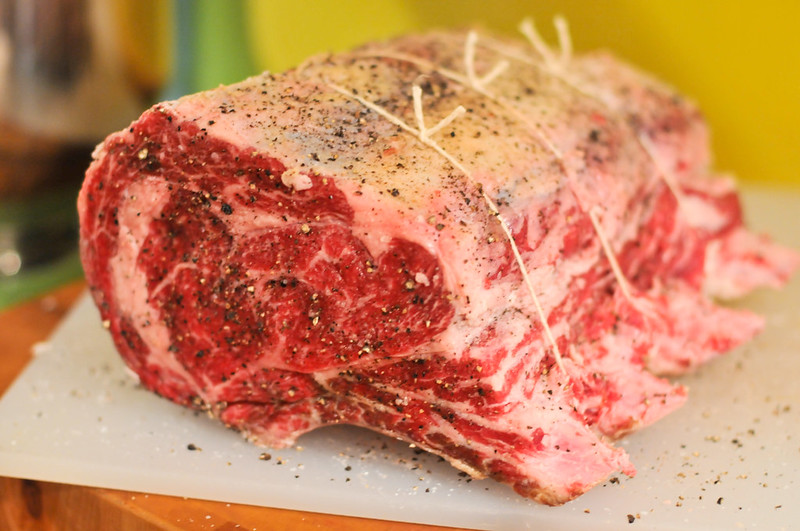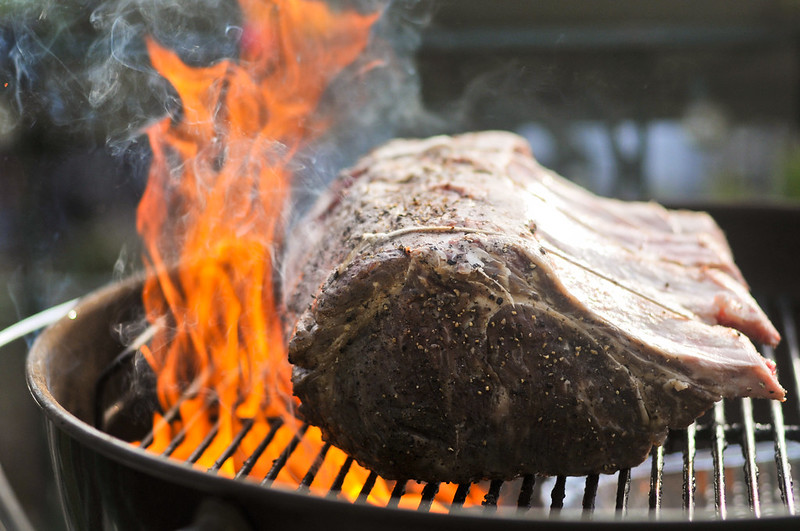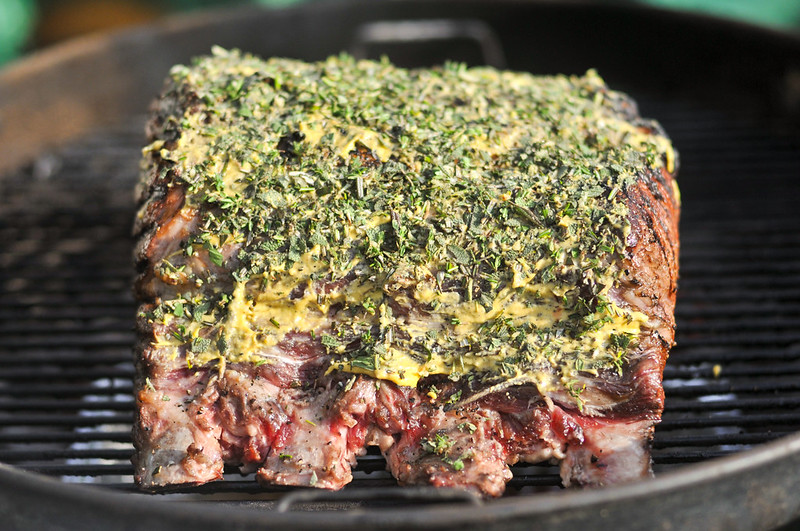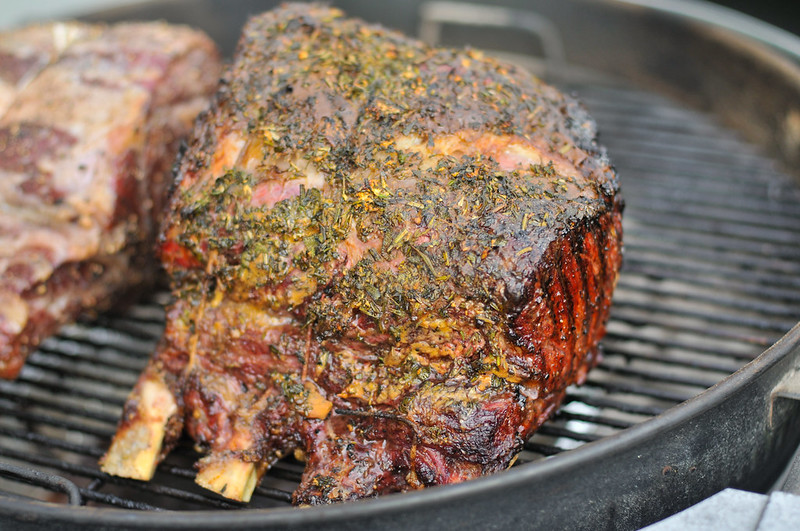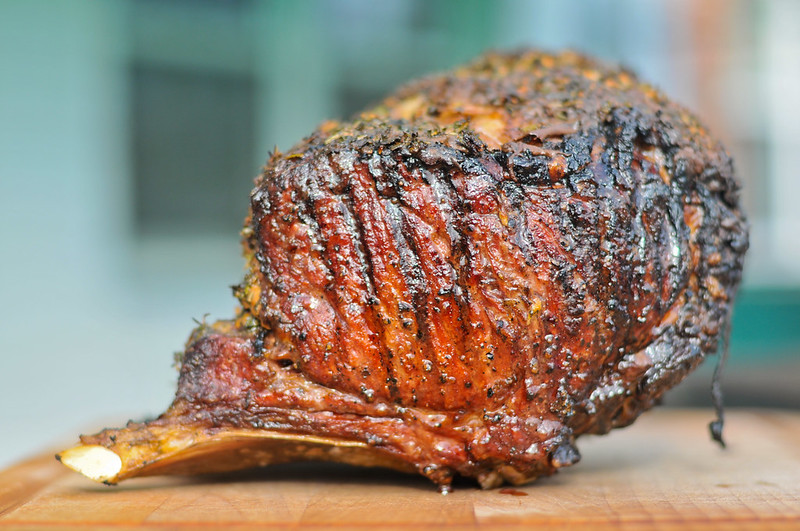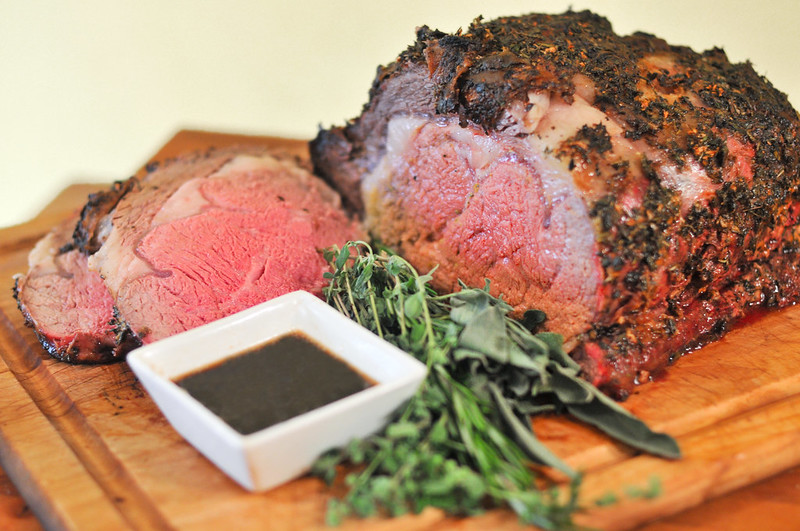Herb-Crusted Standing Rib Roast
On the first day of my Kingsford barbecue competition boot-camp, we were given a meat demo from Snake River Farms, the brisket supplier of choice for many competition teams. During this demo we learned how to break down enormous hunks of beef into New York strips, rib steaks, and the best of all, the rib-eye cap. Thinking back to the only time I've done a rib roast, I now wish I had removed the cap for that amazingly flavorful steak, but alas, I did not, but the whole standing rib roast I did cook was one of the greatest pieces of meat to cross my grill.
While I've been very impressed with the Snake River Farms beef, this particular standing rib roast came via another great producer, Creekstone Farms, graciously provided by Pat LaFrieda for an original post I did on Serious Eats. I got the entire standing rib roast—the primal rib section of the steer, bones six through twelve—cut into one four bone piece and another three bone piece. I decided to divide this up into two different test recipes, of which, this herb-crusted version was the clear winner.
The first step to preparing this beautifully marbled side of beef was to trim down all the excess exterior hard fat (save that to grind into burgers or sausages later). From there I tied a piece of butcher twine between each bone so the roast would hold its shape on the grill and cook evenly. A heavy coating of salt and pepper was applied, then the roast sat at room temperature while the salt worked its briny magic to intensify the flavor of the beef.
It was hard to be in the house with the glorious roast just sitting out there, taunting me to cook and devour it, but I had to remember patience is a virtue. Finally, it was time to take it to the grill, where the roast got a nice sear—accompanied by a lot of flare-ups thanks to all the rendering fat—on all sides to form a flavorful crust.
Once crusty brown all over, the roast was moved to indirect heat, bone side down. To build another layer of flavor, I brushed the exposed exterior of the roast with mustard, then patted on an herb mixture containing sage, thyme, rosemary, marjoram, and garlic.
Then another long wait ensued. I only wished to cook this roast to rare—120-125 degrees—and then let it come up to medium-rare off the grill with carryover. This is usually a quick proposition with a lot of cuts of beef after they've been seared, but this monster piece took nearly two hours to reach that point.
It got there though, and it looked tremendous. The herb crust was well adhered to the meat, but did not burn. The rest of the beef was a crusty golden brown that lets your eyes know it holds vast, incredible flavor.
Man, now that's a piece of meat!
After a 20 minutes rest, it was time to slice and serve. I started by removing the ribs (which we gnawed on later) in order to cut boneless slices in a nice serving size. The meat was worthy for a king, rich and luscious, all you'd want from beef and more. The herb crust had an insane amount of flavor that was strong enough to hold up to the intense beefiness of the medium-rare meat—best was when you got both together in one explosive bite. This was a truly special piece of meat, one that I will never forget and worthy of the investment and time to do again.
You Might Also Like
Comments
-
Mike Uh, wow. That's all I can say. Wow.
-
Julie As a whole, I'm trying to eat less meat; but I'd really love to marry this roast :)
-
Jason Great job! Very similar to how I do them on my pellet grill, but totally envious of that incredible piece of meat you got though. Look at the marbling!
Couple quick questions. Did the wood chunk light on fire while you were searing? Second, did you have to replenish the coals and or wood chunk at all during the cook? Lastly, when you covered the grill to cook indirect, how did you adjust the bottom and top vents?
Cheers, and keep grilling and blogging! -
Larry Your roast looks delicious and I must try the herb coating. While RVing, we were in a store in Nevada, MO and they carried meat from Creekstone Farms.
-
Josh @Jason I did light the wood before searing.
For this cook, I did not have to replenish the coals. The fire started to burn out close to the end, but there was enough heat to keep cooking.
I adjusted the vents closed at first until the temp hit around 350, then opened the vent and tried the maintain that temp as well as I could through the cook. -
Jason Thanks Josh!
Lump or Briquette??
Cheers! -
Chris Man I love prime rib on the grill, it is hard to beat, isn't it? Gorgeous shots, especially the one where you are searing it.
-
Troy Amazing Prime Rib!
-
Rita Can you bake the standing rib instead of grilling it?
-
Josh @Rita Yup. For oven roasting, I'd start it low—225-250°F—until it hits 125°F. Then remove the roast, crank up the heat to 500°F, and then when heated, place the roast back in and cook until a nice crust forms.
-
Tim I only have a gas grill and will be making a full rack of ribs. I won't be able to move it to a cool side of the grill. How would you change the preparation for it?
-
Josh @Tim Can you split the rack in two so you can have it all over indirect heat? If the only option is to have it over direct heat, you might want to consider doing the roasting portion in the oven and the searing on the grill.
-
TwoDogs&Sanchez Step 4 says : Grill for two hours, rest for 20 minutes.
But the Total cooking time in summary is
Prep Time:
15 Minutes
Inactive Time:
2 Hours
Cook Time:
2 Hours 15 Minutes
Total Time:
4 Hours 30 Minutes
I'm assuming the 20 minute rest is wrong?? 2 hours resting is right?? -
Josh @TwoDogs&Sanchez You should let it rest 20-30 minutes. The 2 hours inactive refers to the time after it's seasoned and before it's cooked.
